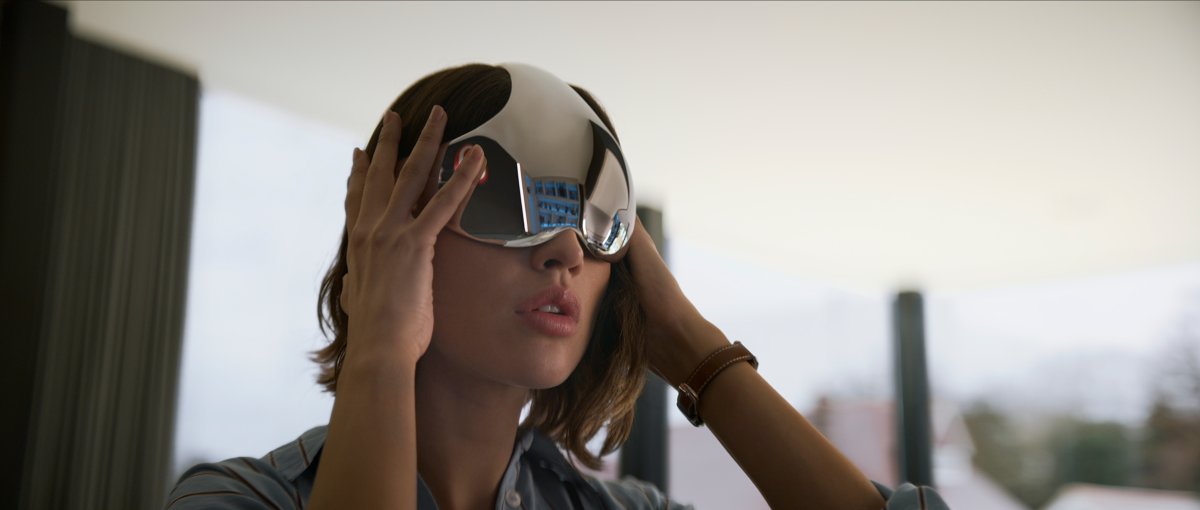I watched the opening scene of this show and it was quite stunning as is mentioned below. I may have to watch the rest although I hate watching shows where they seem to think the f-bomb is necessary and everyone uses it. That may be the truth these days, but I still don't like it.
Historical views of early Chinese communism are very interesting and confirm my theory that paranoia is inherent in communism no matter where it raises its ugly head.
The science and controversy behind Netflix’s ‘3 Body Problem’
Netflix’s 3 Body Problem has sparked fascination and controversy.

Based on the 2008 novel by Liu Cixin and brought to the small screen by Game of Thrones creators D.B. Weiss and David Benioff, the series tells the story of an impending alien invasion of Earth.
The show portrays some science that left some viewers with questions and some historical events that have upset some people in China.
Global News spoke to experts to separate fact from fiction and history from hysteria.
What is a three-body problem?
A three-body problem refers to three astronomical bodies, like planets or suns, and how each object’s gravity impacts the other’s orbits.
But it’s easiest to understand if we start with a two-body problem.
“The closer objects are, the stronger is the gravitational pull,” York University professor emeritus of physics and astronomy Paul Delaney said.
The sun is about a million times larger than the Earth, according to NASA, and so its gravity holds our planet in orbit around it.
The orbit is stable, making it predictable, Delaney said.
This is a two-body problem, just like the moon and the Earth, and it’s a problem that’s been solved since Sir Isaac Newton’s work on gravity.
“We can theoretically figure out where (the two objects) will be as a function of time,” Delaney told Global News.
“There are complications with angular momentum and tidal forces and friction,” he said, speaking from Tuscon, Ariz., “but to all practical intents and purposes, the moon will stay in a stable orbit.”
There are other planets in the solar system and the moon orbits Earth. Delaney told Global News, though, that these objects are so far away and have such small mass compared with the sun that they don’t significantly influence the Earth’s orbit.
A three-body problem involves another astronomical object, like another sun.
“The stability of the planetary orbit around the two stars,” he said, “is not stable.”
That instability means the orbit becomes less predictable because the changing distances and forces that the objects exert on each other would also alter the speed.
“Therefore, predicting where they will be as a function of time (is) doable, but much more difficult,” Delaney said.
So, three-body problems do exist and can get even more complicated, with even eight stars.
An “n-body” problem, Delaney explained — where “n” represents any number of objects exerting gravity on each other — is “horrendous” to calculate.
An n-body problem could eventually result in one of the objects colliding with another, or being ejected off into space, according to Delaney.
And the different gravities pulling on a planet in an n-body problem of two or more could disrupt, if not destroy, life on the planet.
It could affect tectonic plates and cause earthquakes, alter tides and change the water cycle and weather, Delaney told Global News.
“If our surface temperature fell below zero consistently for just years, let alone centuries or beyond, yeah, we’d be toast,” he said.
The three-body problem in the Netflix show refers to three suns, with the Trisolaran people living on a planet caught between them.
“Tri” comes from the Latin and Greek language and means “three,” while “solar” comes from the Latin word for “sun.” Their planet is caught between the gravity of the three suns and their civilization is perpetually destroyed.
The aliens want to invade Earth to live on a planet with a stable two-body problem.
The proton phone
To view their potential future home, the Trisolarans use a proton to project and receive information across the universe from Trisolaris to Earth using something called “quantum entanglement.”
“The moment you put the word ‘quantum’ in front of anything, everybody goes, ‘ooh,’ and anything seems possible,” Delaney said.
Quantum entanglement is real, he added, but it doesn’t work — as far as we know — how the show portrays it.
Protons are positively charged subatomic particles. Along with neutrons, which have no charge (as in, “neutral”), they make up part of an atom’s nucleus.
For example, an atom of hydrogen comprises one proton and one negatively charged electron in a probability field around it.
Protons are not “small lumps of matter that just sits there,” Delaney said. They have specific characteristics, involving, among other things, the electrons around them and their own spin.
“That information, we believe, can be entangled to other particles, so that all of the exact states of this particular particle are mimicked by (that) particle,” Delaney said.
“And if you change this (proton’s) state, (the other proton’s state) changes instantaneously regardless of distance.”
He said this was an example of one of the frictions between quantum mechanics and the regular atomic theory of matter, which states that anything can only move as fast as the speed of light.
“If you’re 400 light years apart, then it takes 400 years” to get there, travelling at the speed of light, Delaney said.
Entanglement ignores that distance – but it doesn’t mean information can be transmitted.
“The proton isn’t exactly scanning Earth, picking out photographs and transmitting information about its local environment,” he said.
Bombing space to travel
At one point, a human character in the show proposes detonating a series of nuclear bombs in space to propel a spaceship forward.
This, it turns out, is theoretically possible.
“We looked at that option back in the ’60s when nuclear warheads were common,” Delaney told Global News.
It was called Project Orion.
The craft would have been “powered by successive explosions of hydrogen atomic bombs,” according to the American Air and Space Museum website. The crew compartment would be “well shielded from the blast and radiation” and shocks of the blasts were absorbed through water-cooled springs.
The site says the U.S. government cancelled Orion in 1964 after seven years of work “mainly because of the Nuclear Test Ban Treaty of 1963, which outlawed nuclear testing in the atmosphere.”
Delaney said the design looked untenable and dangerous, with a giant irradiated plate permanently situated behind the astronauts and a need for many nuclear bombs.
Chinese controversy
The show has drawn attention not just for its science fiction but also for its portrayals of political events.
The series opens with a scene set in the 1960s in China during the Cultural Revolution.
In it, Red Guards beat a scientist to death.
“The first scene made my jaw drop,” one person wrote on Weibo, a Chinese social media platform.
“Westerners fundamentally can’t accept the idea of Chinese people inventing cutting-edge technology,” another person wrote on the ratings and social network site Douban.
The Cultural Revolution began in China in 1966 when the leader of the Chinese Community Party (CCP) and country, Mao Zedong, mobilized Chinese youth against the bureaucracy, according to Carleton University professor emeritus Jeremy Paltiel.
Mao believed he was being frozen out of power, he said, and believed he could purge the people he didn’t like while also inoculating China against losing its revolutionary zeal by having young people toss out the old.
“It became quickly extremely violent because nobody was sure who the right targets were,” Paltiel said.
He said the CCP never fully counted the dead, but “certainly we’re talking about tens of thousands of people who were beaten to death.”
“People were beaten to death in public,” he said, and some were “cannibalized.”
He told Global News he was an exchange student in 1974, after the violence ended.
“In our dorm, the shower stalls had no doors left on them because they’d been taken off during the Cultural Revolution to form armour (for) the students who were fighting each other.”
The country is still ruled by the CCP and Mao remains a revered leader. As such, Paltiel said, the Cultural Revolution is “not very well taught.”
“(The CCP) says it’s a mistake, but they don’t dwell on it” because it’s a period of suffering and humiliation for the party.
He suspected the criticism some in China have levelled at the Netflix series likely stems from surprise from people unfamiliar with what happened, in a country where history and the internet are heavily censored. He also suggests some may be outraged because it seems like foreigners are embarrassing China by showing such a tumultuous time.
But the novel that forms the source material for the Netflix show was written by a Chinese author, Liu Cixin, and initially published in China before being translated into English.
The novel won the prestigious Hugo Award for science fiction and fantasy in 2015.
While the decision to adapt the book faced criticism in 2020, with five Republican senators calling on Netflix to reconsider over comments by Liu about Uyghur Muslims, Netflix defended the decision in a statement reported on by Variety that year.
“Mr. Liu is the author of the books, not the creator of this series,” Netflix was quoted as saying.
– with files from Reuters
=========================================================================================




No comments:
Post a Comment